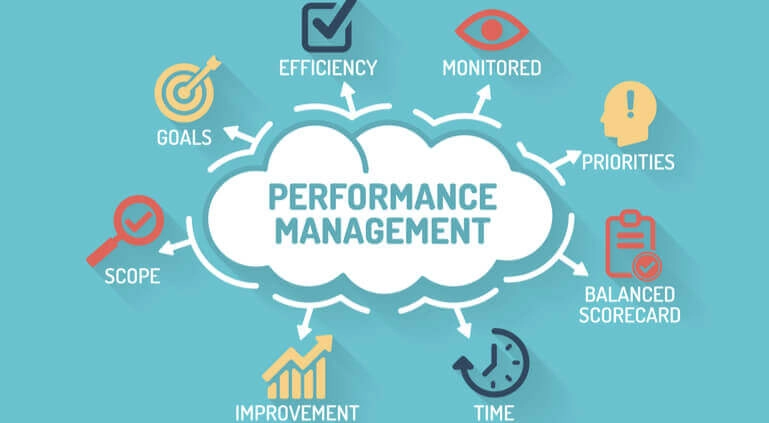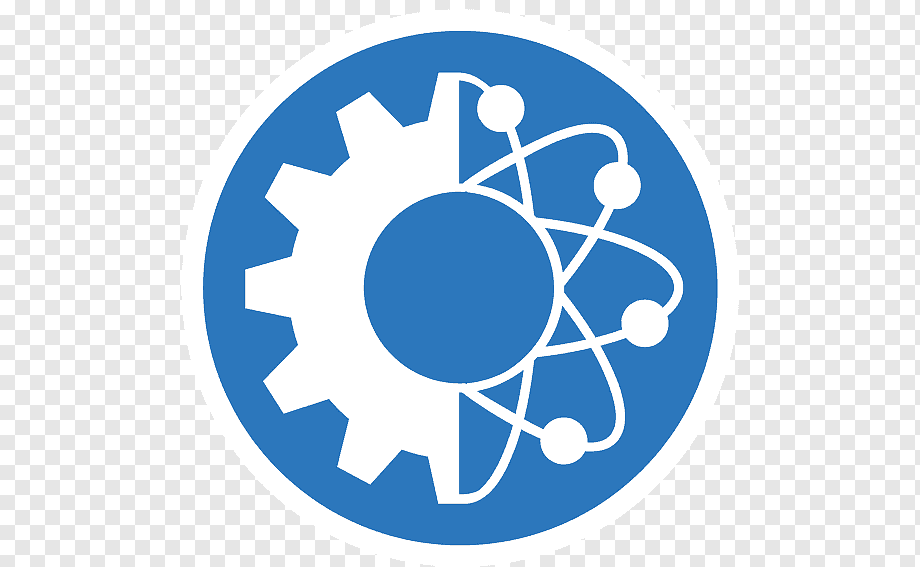
Why a Performance Management System Matters
In the fast-paced and ever-evolving world of business, the significance of a Best Performance Management System cannot be overstated. It’s not just a passing trend or a mere formality; it is the very backbone of success for organizations of all sizes. Let’s delve deeper into why a performance management system matters.
1. Enhancing Accountability
Accountability is the cornerstone of any successful enterprise. Without a structured performance management system, accountability can become elusive. It’s through this system that employees understand their responsibilities, performance expectations, and how their work contributes to the overall success of the organization. When everyone knows what’s expected of them, accountability flourishes.
2. Nurturing Talent and Potential
In any workforce, there’s untapped potential waiting to be unleashed. A Best Performance Management System provides a platform to identify and nurture talent. It helps managers recognize employees’ strengths and areas for improvement, paving the way for tailored development plans. This, in turn, leads to a more skilled and capable workforce.
3. Aligning Individual and Organizational Goals
For an organization to thrive, individual goals should align seamlessly with its broader objectives. A performance management system facilitates this alignment. It ensures that every employee’s efforts contribute to the achievement of the company’s mission and vision. When everyone is rowing in the same direction, success becomes not just a possibility, but a certainty.
4. Fostering Continuous Improvement
Business environments are in a constant state of flux. To stay competitive, organizations must continually adapt and improve. A performance management system encourages a culture of continuous improvement. It prompts regular feedback, performance evaluations, and the identification of areas where processes, products, or services can be enhanced.
5. Enhancing Employee Engagement
Employee engagement is more than just a buzzword; it’s the lifeblood of a thriving organization. Engaged employees are not only more productive but also more loyal. A performance management system fosters engagement by providing employees with a clear understanding of their roles, opportunities for growth, and a structured framework for communication with management.
Benefits of an Effective Performance Management System
The advantages of implementing an effective Best Performance Management System within an organization extend far beyond the superficial aspects of performance evaluations. A well-structured system can have a profound impact on various facets of the workplace. Let’s explore these benefits in greater detail:
1. Boosting Productivity
Productivity is the lifeblood of any successful business. An effective Best Performance Management System enhances productivity by setting clear expectations, tracking progress, and providing constructive feedback. When employees know what’s expected of them and receive regular feedback, they are more motivated and focused, leading to increased productivity.
2. Enhancing Employee Satisfaction
Employee satisfaction is not just a feel-good metric; it directly influences retention and performance. A Best Performance Management System that emphasizes open communication and recognition boosts employee morale. When employees feel valued and heard, they are more likely to stay with the organization and contribute positively.
3. Aligning Goals and Objectives
One of the core functions of a Best Performance Management System is aligning individual goals with organizational objectives. This alignment ensures that every employee’s efforts are directed toward achieving the company’s mission and vision. It creates a sense of purpose and unity among the workforce.
4. Identifying Skill Gaps
A Best Performance Management System helps identify skill gaps among employees. By conducting regular assessments, managers can pinpoint areas where additional training or development is needed. Closing these skill gaps ensures that the workforce remains adaptable and competitive.
5. Encouraging Continuous Learning
In today’s rapidly changing business landscape, continuous learning is imperative. An effective performance management system promotes a culture of learning and development. It encourages employees to seek opportunities for skill enhancement and stay up-to-date with industry trends.
How to Choose the Right Performance Management System
Selecting the right Best Performance Management System for your organization is a critical decision that can significantly impact your workforce’s productivity and satisfaction. To make an informed choice, consider the following key factors when navigating the selection process:
1. Define Your Objectives and Needs
Begin by identifying the specific goals and needs you aim to address with a performance management system. Are you primarily focused on improving employee engagement, increasing productivity, or enhancing talent development? Understanding your objectives will help you align your choice with your organization’s unique requirements.
2. Consider Scalability
Your organization is not static, and your Best Performance Management System needs may evolve over time. Ensure the system you select can scale with your company’s growth. Scalability guarantees that your investment remains relevant and effective as your workforce expands.
3. Assess User-Friendliness
User adoption is crucial for the success of any software system. Evaluate the user-friendliness of the performance management system from both the employee and managerial perspectives. An intuitive interface encourages active participation and minimizes resistance to change.
4. Integration Capabilities
Compatibility with your existing HR and business software is paramount. A performance management system that seamlessly integrates with your HRIS (Human Resources Information System) and other tools ensures a cohesive flow of data, reducing manual data entry and potential errors.
5. Customization Options
Every organization has its own unique processes and requirements. Look for a system that offers customization options, allowing you to tailor the system to your organization’s specific needs, including performance metrics, evaluation criteria, and reporting.
Implementing a Performance Management System Successfully
The successful implementation of a Best Performance Management System is pivotal to realizing its full potential and reaping the associated benefits. Here’s a comprehensive guide to ensure a smooth and effective implementation process:
1. Clear Communication and Leadership Support
Begin by clearly communicating the reasons behind implementing the system to all stakeholders, including employees and managers. Leadership support is vital; when top management champions the initiative, it sets a positive tone for the entire organization.
2. Comprehensive Training Programs
Provide thorough training to both employees and managers on how to use the Best Performance Management System effectively. Ensure that everyone understands the system’s features, processes, and expectations.
3. Customization for Your Organization
Tailor the Best Performance Management System to align with your organization’s unique needs and culture. Customize performance criteria, evaluation forms, and workflows to reflect your specific objectives and processes.
4. Pilot Testing
Before rolling out the system organization-wide, conduct a pilot test with a small group of employees. Gather feedback, identify potential issues, and make necessary adjustments to improve user experience and functionality.
5. Set Clear Goals and Expectations
Define clear performance goals and expectations for all employees. Ensure that each team member understands their role in the process, the criteria used for evaluations, and how performance data will be used.
Tips for Managing Employee Performance Effectively
Managing employee performance is a multifaceted responsibility that goes beyond annual reviews and performance appraisals. To foster a high-performance culture within your organization, consider these tips for managing employee performance effectively:
1. Set Clear and Measurable Goals
Begin by establishing clear, specific, and measurable performance goals for each employee. Goals should be aligned with the organization’s objectives and tied to key performance indicators (KPIs). When employees have a clear understanding of what is expected, they are more likely to excel.
2. Provide Regular Feedback
Frequent feedback is essential for performance improvement. Encourage managers to provide ongoing, constructive feedback to employees. Timely feedback allows employees to make adjustments and improvements in real-time rather than waiting for annual reviews.
3. Use SMART Goals
SMART (Specific, Measurable, Achievable, Relevant, and Time-bound) goals provide a framework for setting effective performance objectives. Ensure that each goal meets these criteria to make them more actionable and achievable.
4. Recognize and Reward Achievements
Acknowledging and rewarding employees for their accomplishments is a powerful motivator. Recognize outstanding performance through verbal praise, bonuses, promotions, or other forms of recognition. Celebrating achievements reinforces positive behavior.
5. Address Performance Issues Constructively
When performance issues arise, address them constructively and proactively. Avoid placing blame and focus on finding solutions. Work with the employee to create a performance improvement plan that outlines clear steps for progress.
Common Challenges in Performance Management
Best Performance Management System, while crucial for organizational success, is not without its challenges. Understanding and addressing these common hurdles can help organizations navigate the complexities of performance management effectively:
1. Resistance to Change
Resistance to change is a frequent challenge when implementing a new performance management system. Employees and managers may be accustomed to existing processes and be hesitant to adopt new approaches. Effective change management strategies, clear communication, and training can help alleviate this resistance.
2. Lack of Managerial Training
Many managers are not adequately trained in performance management. They may struggle with providing constructive feedback, setting clear goals, and conducting fair evaluations. Investing in manager training and development is essential to overcoming this challenge.
3. Inconsistent Evaluation Criteria
Inconsistent evaluation criteria can lead to perceptions of bias and unfairness. It’s crucial to establish standardized criteria and performance metrics that apply consistently across the organization. This ensures that employees are evaluated fairly and objectively.
4. Overemphasis on Administrative Tasks
Performance management systems can sometimes become overly focused on administrative tasks, such as documentation and form-filling, rather than genuine performance improvement. Striking a balance between administrative requirements and meaningful performance discussions is essential.
5. Lack of Employee Engagement
Low employee engagement with the performance management process can hinder its effectiveness. Employees may view it as a mere formality or a top-down exercise. To address this, involve employees in goal-setting, feedback discussions, and the design of the performance management process itself.
The Future of Performance Management Systems
As the business landscape continues to evolve, so too does the future of Best Performance Management System. To remain relevant and effective, these systems are undergoing significant transformations to meet the needs of modern organizations and the workforce of tomorrow. Here are key trends and innovations shaping the future of performance management:
1. Continuous Feedback and Check-Ins
The traditional annual performance review is giving way to a more agile and frequent feedback approach. Continuous feedback and regular check-ins between managers and employees are becoming the norm. This shift allows for real-time adjustments, skill development, and improved communication.
2. Data-Driven Insights
Performance management systems are increasingly leveraging data analytics and artificial intelligence to provide actionable insights. Predictive analytics can identify performance trends, employee engagement patterns, and areas for improvement, enabling more informed decision-making.
3. Focus on Employee Development
The future of performance management emphasizes employee development and growth. Organizations are investing in personalized learning paths, skill-building resources, and career development opportunities. Performance discussions are shifting towards coaching and career planning.
4. Goal Setting and OKRs
Objectives and Key Results (OKRs) are gaining popularity as a goal-setting framework. This approach aligns individual and team goals with organizational objectives, promoting transparency and clarity in performance expectations.
5. Emphasis on Soft Skills and Well-Being
Performance management is expanding to include assessments of soft skills, emotional intelligence, and employee well-being. Organizations recognize that these factors are crucial for success in today’s collaborative and mentally taxing work environments.
FAQ – Best Performance Management System
1. What is a performance management system, and why is it important?
Best Performance Management System is a structured process that helps organizations set expectations, evaluate employee performance, provide feedback, and align individual goals with organizational objectives. It’s important because it enhances accountability, fosters employee development, improves productivity, and supports the achievement of business goals.
2. What are the key features to look for in the best performance management system?
Key features include goal setting and tracking, continuous feedback, 360-degree evaluations, development plans, data analytics, integration with HR systems, user-friendly interface, and customization options to align with your organization’s needs.
3. How often should performance evaluations occur?
Traditional annual reviews are evolving into more frequent check-ins and continuous feedback. The frequency can vary but should align with your organization’s goals and the nature of the work. Many organizations now conduct quarterly, monthly, or even weekly check-ins.
4. How can a performance management system improve employee engagement?
Best Performance Management System improves engagement by providing employees with clear expectations, regular feedback, opportunities for development, and recognition for their achievements. Engaged employees are more motivated, productive, and loyal to the organization.
5. How do I choose the right performance management system for my organization?
Start by defining your objectives and needs, considering scalability, assessing user-friendliness, evaluating integration capabilities, customization options, analytics and reporting features, accessibility, support and training, cost and ROI, security and data privacy, and future-readiness.
6. What role does technology play in modern performance management systems?
Technology is crucial in modern Best Performance Management System. It enables data collection, analytics, automation of administrative tasks, remote collaboration, and user-friendly interfaces, making the process more efficient and user-centric.
7. How can I ensure fairness and reduce biases in performance evaluations?
To ensure fairness, use standardized evaluation criteria, provide training on bias awareness, encourage diverse feedback sources, and incorporate 360-degree evaluations. Regularly review and audit the evaluation process for potential biases.
8. How does a performance management system contribute to organizational growth and success?
A Best Performance Management System contributes to growth and success by aligning individual and team efforts with organizational goals, fostering continuous improvement, enhancing employee engagement, identifying skill gaps, and promoting a culture of accountability and learning.
9. How can I measure the effectiveness of a performance management system?
You can measure effectiveness by tracking key performance metrics, such as productivity, employee turnover, engagement scores, and achievement of organizational goals. Gathering feedback from employees and managers is also essential to assess its impact.
10. Are there industry-specific performance management systems?
Yes, some Best Performance Management System are tailored to specific industries, such as healthcare, education, or finance. These systems may include features and metrics unique to the industry’s needs and regulations.
Conclusion
Best Performance Management System is the cornerstone of success in the modern business world. Embrace the potential it holds to boost productivity, enhance employee satisfaction, and propel your organization toward new heights.






